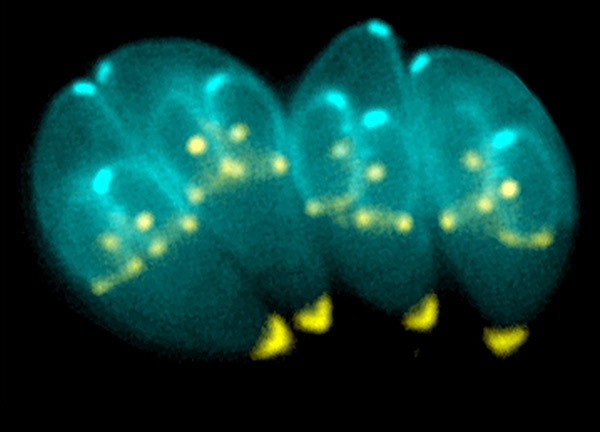Highlights
•T. gondii bradyzoite and tachyzoite-infected cells show distinct transcriptional patterns
•Protein export in bradyzoites is important for host transcriptional changes
•The effector IST is exported in bradyzoite infected cells
•Bradyzoite protein export is important for protection against IFNγ-mediated cell death
Summary
Toxoplasma gondii develops a latent infection in the muscle and central nervous system that acts as a reservoir for acute-stage reactivation in vulnerable patients. Little is understood about how parasites manipulate host cells during latent infection and the impact this has on survival. We show that bradyzoites impart a unique transcriptional signature on infected host cells. Many of these transcriptional changes rely on protein export and result in the suppression of type I interferon (IFN) and IFNγ signaling more so than in acute stages. Loss of the protein export component, MYR1, abrogates transcriptional remodeling and prevents suppression of IFN signaling. Among the exported proteins, the inhibitor of STAT1 transcription (IST) plays a key role in limiting IFNγ signaling in bradyzoites. Furthermore, bradyzoite protein export protects host cells from IFNγ-mediated cell death, even when export is restricted to latent stages. These findings highlight the functional importance of host manipulation in Toxoplasma’s bradyzoite stages.







